Art World
Cult Favorite JB Blunk, Who Shunned Galleries, Is on the Rise
Noguchi was a friend, Sam Francis was a patron, and Charles Ray is his biggest fan. Now a new exhibition shines the spotlight on JB Blunk.
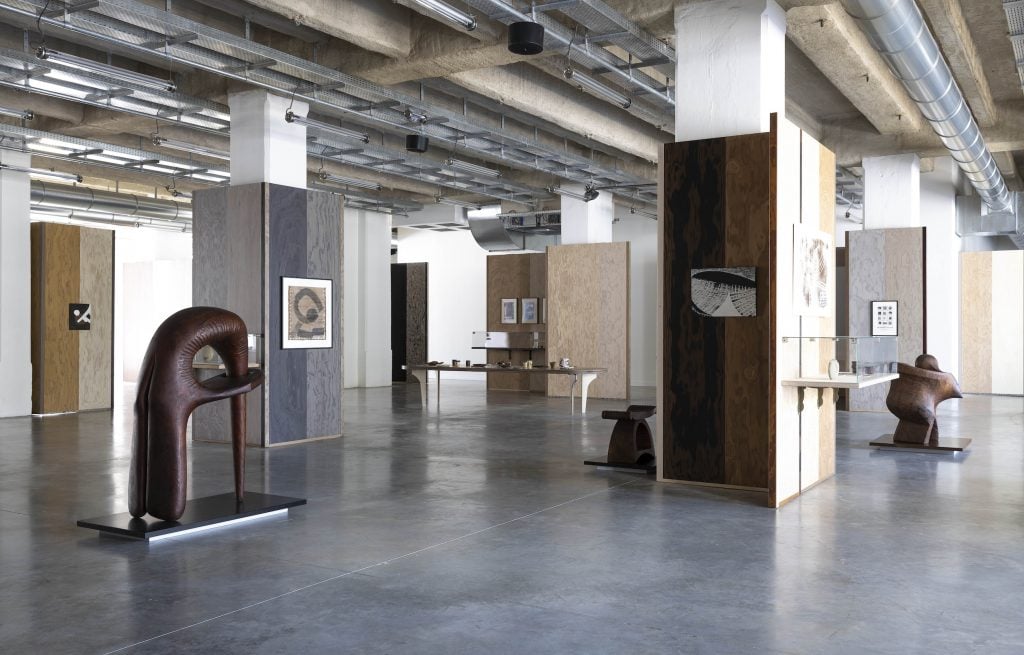
Noguchi was a friend, Sam Francis was a patron, and Charles Ray is his biggest fan. Now a new exhibition shines the spotlight on JB Blunk.

Caroline Roux

The small southwestern French town of Cognac isn’t the obvious place to find an artist born in Kansas and settled in California, who was seriously influenced by Japan and Mexico. But it is home to the Martell Foundation, which is named for the famous brandy that is made here and supports this cultural initiative; the foundation is housed in the large Bauhaus-style building from 1929 that once was its bottling plant.
Now, until late December, the foundation’s nearly 10,000-square-foot ground floor gallery is filled with organic wooden totems, carefully crafted stools, throne-like chairs, ceramic works of all shapes and sizes, and vitrines of carved stones that look like archaeological finds. The work of James Blain Blunk has come to town.
Blunk is not well known in France, and only lusted after in the U.S. by a cultish group of converts. But the exhibition—called “Continuum” after one of his most brilliant sculptures—should put his name firmly on the European map. Continuum, a calming three-foot-square ring of redwood, is seen in the exhibition only as a photograph: it lives in a private garden in Inverness, California, and its owners will not let it travel.
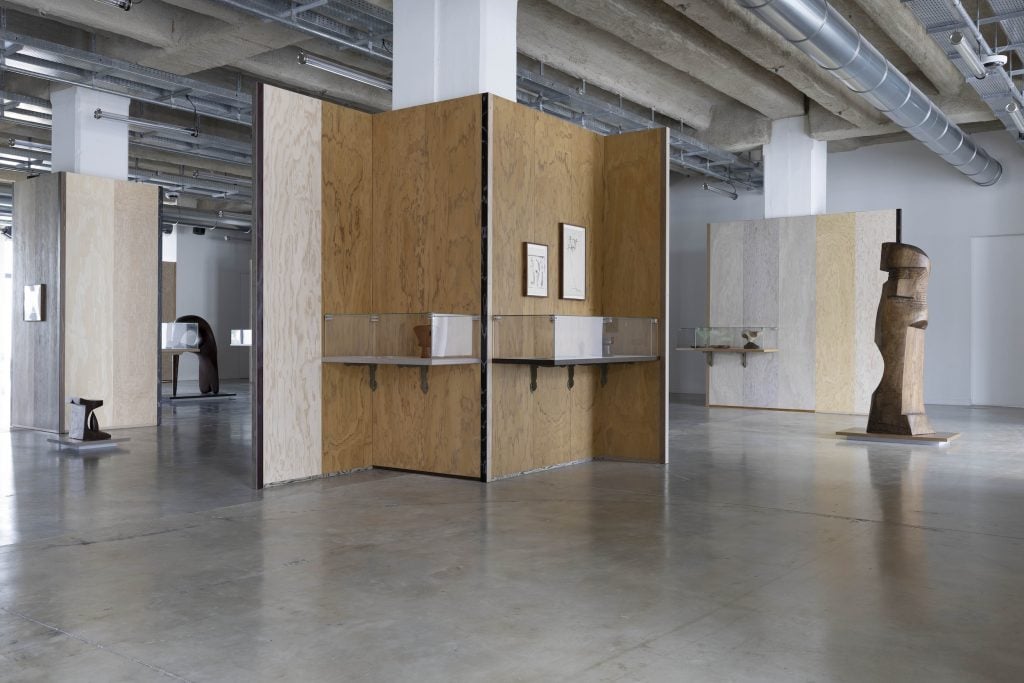
Installation view, “JB Blank: Continuum,” at Fondation d’entreprise Martell. Photo © Sylvie Becquet.
The majority of the 150 works on show have come from the Blunk estate, directed since 2007 by his daughter Mariah Nielson, who was born in 1978. Blunk died in 2002, aged 76, in Inverness. All the work that the family had lived with was left behind in the home he built himself over three years, starting in 1959, and the studio he constructed in the garden. (His friend, the painter Gordon Onslow Ford, gifted him the acre of land. By way of thanks, Blunk carved him a chair from a huge piece of cypress he found by the side of the road.)
“The idea of the exhibition started with the monograph, first published in 2020,” says Nielson. “The Martell Foundation’s director saw it in her favorite book shop in Paris—After 8 Books—and was fascinated by the work. Then she visited the house in Inverness and we began to discuss a show.” The director, Anne Claire Duprat, was taken by Blunk’s connection to the land where he lived, his inclination to work with salvaged materials and the sustainability of his process. He used off-cuts from the logging industry, fallen timber, and clay directly from the local area.
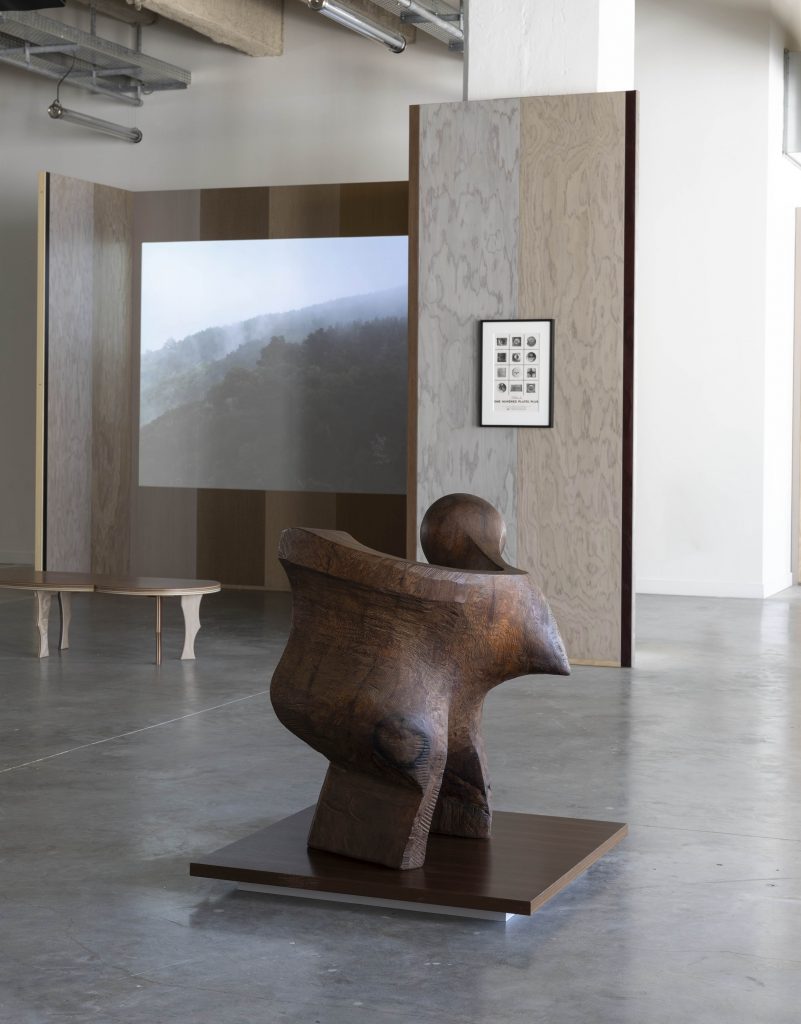
Installation view, “JB Blunk: Continuum,” at Fondation d’entreprise Martell. Photo © Sylvie Becquet.
The earliest piece on show in Cognac is a pot from 1948, made in his art class at the University of California in Los Angeles in 1948. But by 1951 he had been drafted for the Korean War, and at the end of his military term, he stayed on in Asia. Already passionate about Japanese ceramics, he headed to Tokyo, where he happened to meet Isamu Noguchi, who introduced him to the master potter Kitaōji Rosanjin.
Later he also studied under Kaneshige Toyo, another master, and certain influences remained strong in his work—not least the decoration of pots with calligraphic strokes. The forms, though, were distinctly his own, and far from the formal shapes of the Japanese. “When I met the Kaneshige family, I thought they’d be disappointed in the way JB had made ceramics, but actually they found it amusing,” says Nielson. The curvaceous organic shapes he preferred owe a greater debt to the British artists Henry Moore and Barbara Hepworth.
Abandoning the wheel as soon as he returned to the U.S. in 1958, he liked to start with a lump of clay and extract material to form his objects. In 1962, he started to do the same with wood. The two materials made up the basis of his practice.
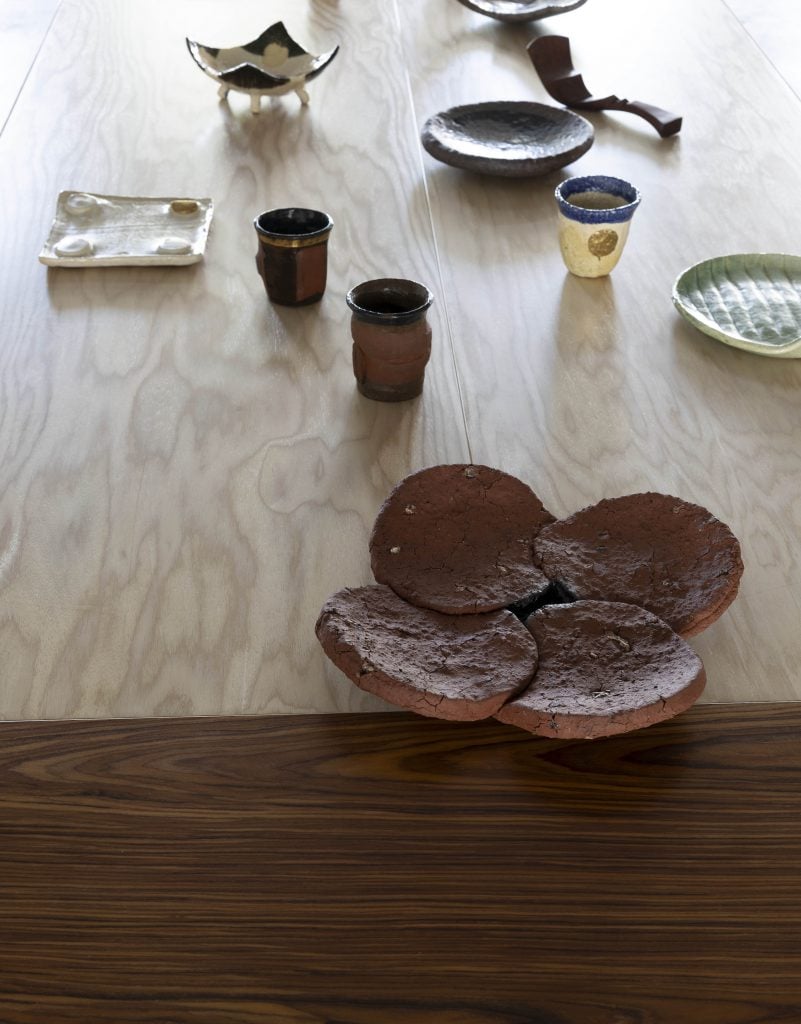
Installation view, “JB Blunk: Continuum,” at Fondation d’entreprise Martell. Photo © Sylvie Becquet.
Blunk’s golden period was the 1960s and ’70s, when Californians in particular appreciated the artist’s closeness to nature and the rawness of the work. With the onslaught of shiny postmodernism in the 1980s, it fell out of favor. But Blunk was undeterred. As is manifest in the exhibition, he worked across a variety of scales, creating stately chairs, or small pieces of jewelry for his second wife, Nielson’s mother, and friends. One of the most majestic is Mariah’s chair, made for Christine Nielson when she was pregnant with her daughter, carved from a single piece of redwood. It is different from every angle, but harmonious nonetheless. Stools share the same characteristic of offering up an ever-changing series of forms as you move around them.
In the 1980s, he built another home in Oaxaca with Christine Nielson, this time in adobe. The couple were there for four months of the year, and a group of vessels for sipping mezcal recall Mayan decoration: each is emblazoned with a grimacing mezcal-swallowing face.
In his lifetime, Blunk preferred not to be part of a gallery. He liked to have occasional shows and sell directly to collectors. “He supported the family with public commissions,” says Nielson, of the 17 he created in the U.S. Of those, 13 are still in place and a film focuses on four of them. One, called the Planet, is a huge craggy floorwork, hewn from a single redwood piece, which sits in the Oakland Museum in California. It now boasts a deep, satiny patina from the hours that children and adults have played and rested upon it. “That’s exactly what he wanted,” says Nielson.
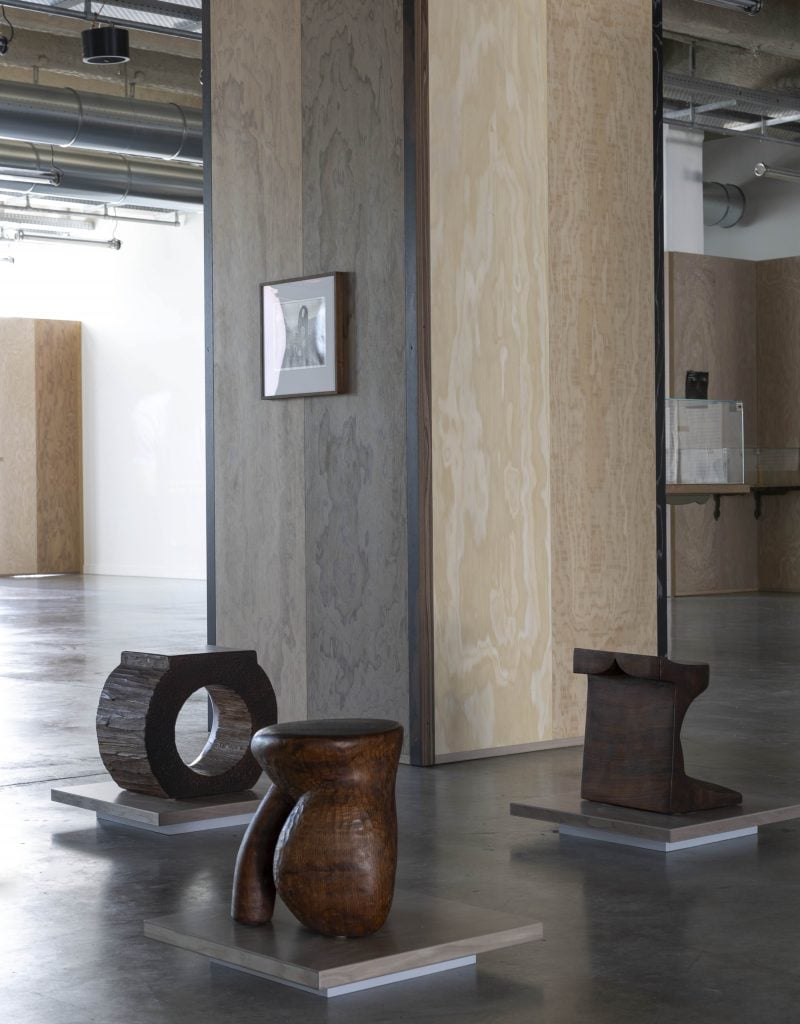
Installation view, “JB Blunk: Continuum,” at Fondation d’entreprise Martell. Photo © Sylvie Becquet.
Since 2010, Los Angeles dealer Tim Blum has brought Blunk onto his gallery’s roster. (He is also presented by Kate McGarry in London and Kasmin in New York.) “He is not a market artist. It’s a bit of a cult, because there’s not that much work around, and you get obsessed,” says Blum. “It’s a love thing.” One super-fan, artist Charles Ray, curated the first Blunk show in Blum’s gallery, which was also hosting a Mark Grotjahn show. “Mark is one of Blunk’s biggest collectors,” explains Blum.
With this sort of interest, it’s hardly surprising that prices are now escalating fast. “Stools are $50,000 to $60,000, chairs $150,000 to $200,000,” says Blum, who currently has available a fine table with two benches. (That would be somewhere around $400,000.) But more than the market, the point of JB Blunk is very much the man and the object, and this exhibition offers plenty of both.
“JB Blunk: Continuum” is on view at Fondation d’entreprise Martell, 16 Av. Paul Firino Martell, 16100 Cognac, France, June 8-December 29, 2024.